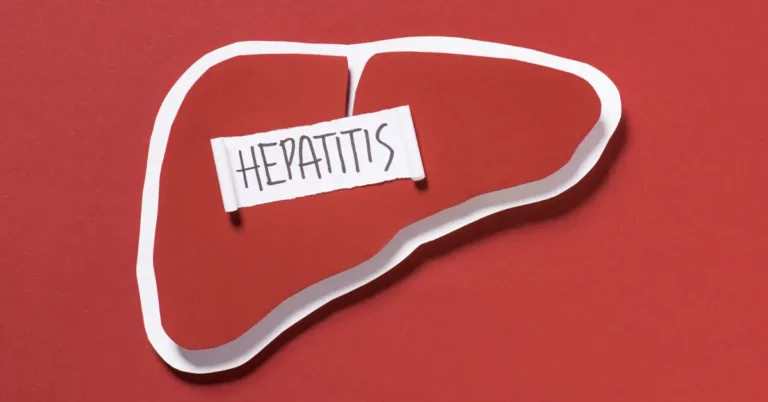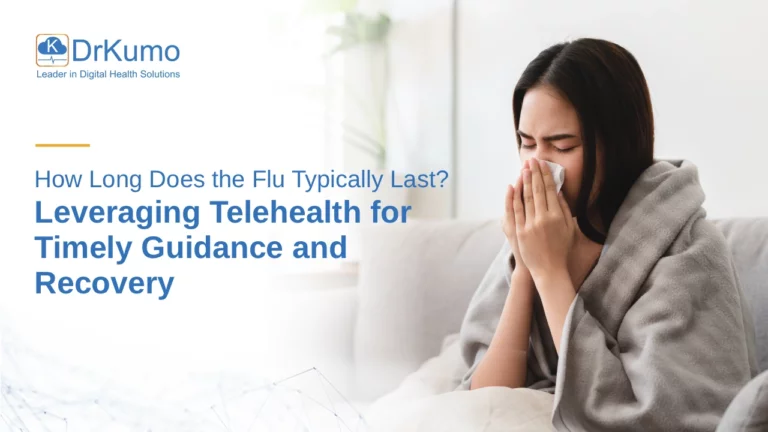In modern healthcare, ensuring patient engagement and compliance with treatment plans are paramount for achieving positive outcomes. The DrKumo Remote Patient Monitoring System offers an innovative solution to address these challenges. By enabling remote monitoring and seamless communication, DrKumo RPM empowers patients to actively participate in their care while facilitating collaboration with healthcare providers.
This article explores how the DrKumo Remote Patient Monitoring System revolutionizes healthcare delivery by empowering patients to actively engage in their care and adhere to treatment plans, thereby enhancing overall patient engagement and compliance.
Overview of Patient Engagement
Patient engagement refers to the active involvement of patients in their healthcare journey. It encompasses actions taken by individuals to manage their health and make informed decisions about their care. Engaged patients are more likely to adhere to treatment plans, participate in shared decision-making with healthcare providers, and take proactive steps to improve their health outcomes.
Importance of Patient Compliance in Healthcare
Patient compliance, also known as adherence, is crucial for the success of healthcare interventions and treatment plans. It refers to the extent to which patients follow medical advice, adhere to prescribed medications, and adopt recommended lifestyle changes. High levels of patient compliance contribute to better treatment outcomes, reduced healthcare costs, and improved overall patient satisfaction.
Understanding Remote Patient Monitoring (RPM)
Definition and concept
RPM involves the use of technology to collect and transmit patient health data from remote locations to healthcare providers for assessment and intervention. RPM encompasses various monitoring devices, sensors, and communication platforms to enable continuous monitoring of patients outside of traditional clinical settings.
Evolution of RPM in healthcare
RPM has evolved significantly over the years, driven by advancements in technology and the growing demand for remote healthcare solutions. From early telemedicine initiatives to sophisticated wearable devices and mobile applications, RPM has become increasingly integrated into modern healthcare delivery models, offering new opportunities for proactive and personalized patient care.
Advantages of RPM over traditional healthcare models
RPM offers several advantages over traditional healthcare models, including increased access to care for remote and underserved populations, early detection of health issues through continuous monitoring, and improved patient engagement and satisfaction. Additionally, RPM has the potential to reduce healthcare costs by preventing unnecessary hospitalizations and emergency room visits.
DrKumo Remote Patient Monitoring System
Introduction to DrKumo RPM
The DrKumo RPM system is a comprehensive solution designed to streamline remote patient monitoring and enhance patient-provider communication. It integrates advanced technology, user-friendly interfaces, and personalized care plans to deliver proactive and patient-centered healthcare services.
Features and capabilities
The DrKumo RPM system offers a range of features and capabilities, including remote vital sign monitoring, medication adherence tracking, symptom management, and secure communication channels for patients and healthcare providers. The system is customizable to meet the unique needs of individual patients and healthcare organizations.
How DrKumo RPM works
DrKumo RPM works by leveraging connected devices, such as wearable sensors and mobile applications, to continuously monitor patient health data. This data is securely transmitted to the DrKumo platform, where it is analyzed in real-time to identify trends, detect anomalies, and generate actionable insights for both patients and providers.
The Role of Patient Engagement in Healthcare
Defining patient engagement
Patient engagement encompasses the active involvement of patients in their own healthcare, including participating in treatment decisions, adhering to medical advice, and adopting healthy behaviors. Engaged patients take ownership of their health and collaborate with healthcare providers to achieve optimal outcomes.
Importance of patient engagement for healthcare providers
Patient engagement is essential for healthcare providers as it fosters collaborative relationships with patients, improves communication, and enhances the effectiveness of treatment plans. Engaged patients are more likely to follow medical advice, attend appointments, and actively participate in their care, leading to better outcomes and higher patient satisfaction.
Benefits of patient engagement for patients
Engaged patients experience several benefits, including improved health outcomes, enhanced quality of life, and increased satisfaction with their healthcare experience. By actively participating in their care, patients gain a sense of control over their health and are better equipped to manage chronic conditions, prevent disease progression, and achieve their wellness goals.
Challenges in Patient Engagement and Compliance
Identifying common barriers
Several barriers hinder patient engagement and compliance, including limited access to healthcare resources, socio-economic factors, cultural beliefs, and language barriers. These barriers can prevent patients from actively participating in their care and adhering to treatment plans, leading to suboptimal outcomes.
Understanding patient engagement and compliance resistance
Patient resistance to engagement and compliance can stem from various factors, such as fear of stigma, lack of trust in healthcare providers, misconceptions about treatment options, and concerns about privacy and confidentiality. Addressing these underlying issues is essential to overcome patient resistance and promote meaningful engagement in care.
Impact on healthcare outcomes
The lack of patient engagement and compliance can have significant implications for healthcare outcomes, including increased rates of hospital readmissions, complications, and disease progression. Patients who are not actively engaged in their care may experience delays in diagnosis, ineffective management of chronic conditions, and reduced quality of life.
How DrKumo RPM Enhances Patient Engagement
Personalized healthcare experience
DrKumo RPM provides patients with personalized care plans tailored to their unique needs, preferences, and health goals. By delivering targeted interventions and timely feedback, DrKumo RPM promotes active engagement and empowers patients to take control of their health.
Real-time monitoring and feedback
Through continuous monitoring of vital signs and symptoms, DrKumo RPM enables real-time detection of health issues and proactive intervention by healthcare providers. Patients receive immediate feedback on their health status, allowing them to make informed decisions and adjust their behaviors accordingly.
Empowering patients with data
DrKumo RPM equips patients with access to their own health data, including vital signs, medication adherence, and progress towards health goals. By empowering patients with information and insights into their health, DrKumo RPM fosters a sense of ownership and responsibility, leading to improved engagement and compliance.
Improving Patient Compliance with DrKumo RPM
Promoting accountability
DrKumo RPM promotes accountability by tracking patient adherence to treatment plans, medication schedules, and lifestyle recommendations. Patients receive reminders, prompts, and incentives to adhere to their care plans, helping them stay on track and achieve better outcomes.
Enhancing communication between patients and providers
DrKumo RPM facilitates seamless communication between patients and healthcare providers through secure messaging, telehealth consultations, and remote monitoring capabilities. This open line of communication enables providers to address patient concerns, provide timely guidance, and adjust treatment plans as needed.
Addressing medication adherence
Medication adherence is a critical aspect of patient compliance, particularly for managing chronic conditions and preventing disease progression. DrKumo RPM offers medication reminders, refill alerts, and dosage tracking features to support patients in adhering to their prescribed medications and optimizing treatment outcomes.
Regulatory and Ethical Considerations
Compliance with HIPAA regulations
DrKumo RPM complies with the Health Insurance Portability and Accountability Act (HIPAA) regulations regarding the security and privacy of patient health information. The system employs encryption, access controls, and audit trails to safeguard patient data and ensure compliance with legal requirements.
Ensuring data security and privacy
Data security and privacy are paramount in remote patient monitoring to protect sensitive health information from unauthorized access, breaches, and misuse. DrKumo RPM employs robust security measures, such as encryption, firewalls, and regular security audits, to safeguard patient data and maintain confidentiality.
Ethical Guidelines in RPM
In addition to regulatory requirements, DrKumo RPM adheres to ethical guidelines and principles governing the use of technology in healthcare. This includes respecting patient autonomy, promoting transparency, and ensuring informed consent for data collection, usage, and sharing.
Future Trends in Remote Patient Monitoring
Integration of AI and machine learning
The integration of artificial intelligence (AI) and machine learning (ML) algorithms into remote patient monitoring holds immense potential to enhance predictive analytics, personalized interventions, and clinical decision support. AI-powered RPM systems can analyze vast amounts of patient data, identify patterns, and generate actionable insights to improve patient outcomes.
Expansion of wearable technology
The proliferation of wearable technology devices, such as smartwatches, fitness trackers, and biosensors, is reshaping remote patient monitoring by enabling continuous, non-invasive monitoring of vital signs and health metrics. These wearable devices offer convenience, portability, and real-time feedback, making them invaluable tools for remote healthcare delivery.
Potential impact on healthcare delivery
The continued advancement of remote patient monitoring technologies is poised to transform healthcare delivery models, enabling more proactive, personalized, and cost-effective care. RPM has the potential to shift healthcare from reactive to proactive, from hospital-centric to patient-centric, and from episodic to continuous, ultimately improving health outcomes and patient experiences.
Implementing DrKumo RPM in Healthcare Practices
Training and education for healthcare providers
Successful implementation of DrKumo RPM requires comprehensive training and education for healthcare providers and care coordinators to familiarize them with the system’s features, functionalities, and best practices. Training programs should cover clinical protocols, technical skills, and patient communication strategies to ensure proficiency and effectiveness in using RPM.
Integrating RPM into existing systems
DrKumo RPM can be seamlessly integrated into existing healthcare systems, including electronic health records (EHRs), practice management systems, and telehealth platforms. Integration enables efficient data sharing, interoperability, and continuity of care across different care settings, enhancing the overall patient experience and clinical workflow.
Overcoming implementation challenges
Implementing DrKumo RPM may encounter challenges such as resistance to change, technological barriers, and financial constraints. Healthcare organizations can overcome these challenges by fostering a culture of innovation, providing ongoing support and resources, and leveraging data-driven insights to demonstrate the value and impact of RPM on patient care and outcomes.
Measuring Success: Metrics and Key Performance Indicators
Tracking patient engagement
Key metrics for measuring patient engagement include patient activation scores, participation rates in care plans, and utilization of RPM features. High levels of patient engagement indicate active involvement in their care and are associated with improved health outcomes and satisfaction.
Assessing compliance rates
Compliance rates can be assessed by monitoring medication adherence, appointment attendance, and completion of self-monitoring tasks. Improvements in compliance rates indicate that patients are following their treatment plans and actively participating in their care, leading to better health outcomes and reduced healthcare costs.
Evaluating healthcare outcomes
Healthcare outcomes can be evaluated based on clinical indicators, such as disease control, symptom management, and quality of life improvements. By tracking changes in patient health metrics over time, healthcare providers can assess the effectiveness of DrKumo RPM in achieving desired outcomes and optimizing patient care.
Addressing Patient Concerns
Privacy and security concerns
DrKumo addresses privacy and security concerns by implementing stringent data protection measures, encryption protocols, and access controls to safeguard patient health information. Additionally, DrKumo ensures compliance with HIPAA regulations and ethical guidelines to maintain patient confidentiality and trust.
Accessibility and usability of DrKumo RPM
DrKumo RPM is designed to be accessible and user-friendly for patients of all ages and technological proficiencies. The system features intuitive interfaces, clear instructions, and support resources to guide patients through the monitoring process and address any usability issues they may encounter.
Cost and insurance coverage
The cost of DrKumo RPM may vary depending on factors such as the scope of services, customization requirements, and reimbursement policies. Patients are encouraged to inquire about insurance coverage, flexible payment options, and financial assistance programs to ensure affordability and accessibility of DrKumo RPM services.
Takeaways
The DrKumo Remote Patient Monitoring System represents a transformative approach to healthcare delivery, enhancing patient engagement, compliance, and outcomes. By leveraging technology, personalized care, and data-driven insights, DrKumo RPM empowers patients and providers to collaborate effectively and achieve optimal health.
The future of patient engagement and compliance holds promising opportunities for innovation, collaboration, and continuous improvement. As technology continues to advance and healthcare evolves, DrKumo remains committed to driving positive change and shaping the future of remote patient monitoring.
DrKumo Remote Patient Monitoring System is a game-changer in healthcare, offering a holistic approach to patient care that prioritizes engagement, compliance, and outcomes. With its innovative features, user-friendly interface, and commitment to excellence, DrKumo RPM sets the standard for remote healthcare delivery in the digital age.
Discover the transformative potential of DrKumo RPM in enhancing patient engagement and compliance, ensuring better healthcare outcomes. Contact us now!
Disclaimer: The information provided in this article is intended for educational purposes only and should not be considered medical advice. Patients and healthcare providers are encouraged to consult with qualified medical professionals regarding specific medical concerns or treatment options.








